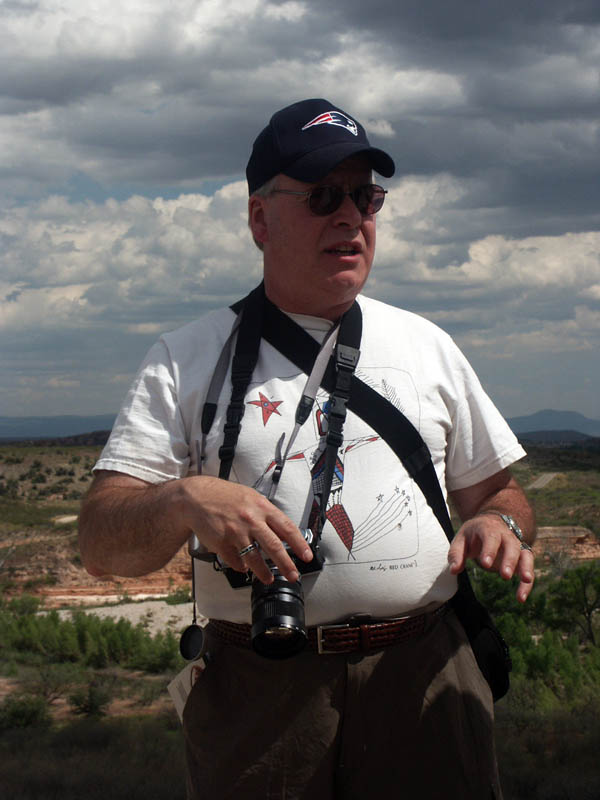Astronomy & Archaeology Intersect in the American Southwest
May 2006 :

Visiting and observing at various well-known observatories by night and sight seeing by day lead me to discover that many of the pueblo ruins were built with astronomical orientation in mind. These early pueblo people had ample time to observe the motions of the heavenly bodies. This was in essence their time calendar that they regulated their lives by. Windows oriented to cast light on marked beams opposite the opening told of the time of planting or harvesting, standing stones and shrines marked the longest and shortest day of the year. They appeared everywhere! My reason for being in the Southwest was for astronomical observing but I had now developed a new daytime interest of archaeology!
After visiting dozens and dozens of well-known ruins and many only known to the archaeological community, I became hooked. The unique part of this new found interest was that the people who built these marvelous monuments were the ancestors of today’s pueblo people. In many cases some of today’s pueblo villages have been occupied since time immemorial. Acoma Pueblo in New Mexico and the Hopi Village of Walpi in Arizona are the oldest continuously inhabited settlements in North America, occupied prior to Columbus’s “Discovery“ of America!
As part of my explorations of this vast area of the US, I also
discovered hundreds of sites where native people as well as early Spanish colonizers carved stories in stone. Rock art sites are everywhere in the Southwest, most recording long forgotten events or stories. Recent research in the last 30 years has shown that many of these rock art sites record what appear to be astronomical events, eclipses, supernova, constellations etc. I had found the place of my dreams! Everywhere I traveled there was astronomy in some form or another.
I knew that I had to put down some type of roots in this land. In 1986 I purchased 40 acres of land in the high desert at 8,000-foot elevation with exceptionally clear night time skies. Also located here are Anasazi ruins from about 1200 AD and the ruins of a Mormon homestead from the late 1800s. I now had possession of everything that interested me about the Southwest.
All my life I have felt a need to document everything I see and experience. Notes and drawings were important to my hobby of astronomy since I was 8 years old when my first interest in astronomy began. I still have all of these notes to this day! As I grew older I discovered photography and was able to afford my first “good” piece of equipment in 1966 just in time for the Leonids meteor shower. This is an interesting date as the first Skyscraper trip to the Southwest I organized was 33 years later for the return of Comet Tempel’s passage through the Earth’s orbit!
In my many 41 years as a Skyscraper member I have always met people in the society with a keen interest in many things in addition to their passion for astronomy. I found a ready audience for my photos and stories of the Southwest. I have traveled extensively over the years with many of the members I grew up with in Skyscrapers to many astronomical research facilities. Dave Huestis, Steve and Kathy Siok, Alan Hall and Steve Hubbard are those that have been with me to many places. In more recent times Dan Lorraine has been “hooked” on the Southwest and has also visited many of the most notable sites with me.



